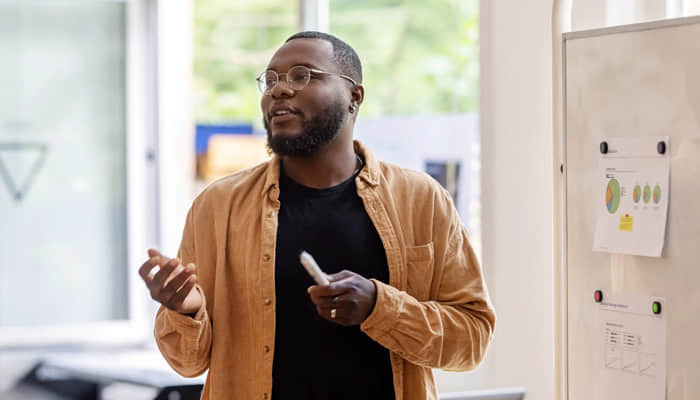Struggling to Focus? Try These Fresh Online Courses Designed for Kids with ADHD

If you’re raising a child with ADHD, you already know that learning doesn’t always follow the “traditional” path. What excites and inspires one moment might become overwhelming the next. Homework can turn into tears. Focus can disappear in seconds. And even the most loving encouragement sometimes falls flat.
You’re not alone. Millions of parents are searching for better ways to support their neurodivergent children—and thankfully, online education is finally catching up.
In 2025, several platforms are offering ADHD-friendly courses that don’t just teach academics—they support focus, emotional regulation, and confidence-building, too. Here are some of the most useful and innovative options available right now.
1. Brainly Learn+ with ADHD-Friendly Features

Real Platform: Brainly, one of the most popular homework help platforms in the U.S.
What’s New: Brainly introduced an ADHD-friendly user interface in late 2024, following feedback from neurodiverse students and educators. Their premium plan, Learn+, now includes:
- Simplified screen layouts
- Audio explanations for key topics
- Bite-sized lessons with visual aids
New in 2025: “Focus Mode” combines fun timers and a friendly avatar coach to help kids stay on task—without feeling overwhelmed. This is especially helpful for middle and high schoolers who get stuck starting assignments.
2. ADDA Kids Academy – Built by ADHD Experts

Real Organization: ADDA – The Attention Deficit Disorder Association, a leading U.S. nonprofit for ADHD advocacy and education.
Launch Year: 2024
Target Audience: Kids aged 8–16 with ADHD or executive function challenges
Key Features:
- Short, engaging video lessons (5–10 minutes each)
- Topics like “How to Get Unstuck,” “Motivation That Works,” and “Dealing with Big Feelings”
- Built-in reflection prompts to build metacognition
ADDA Kids Academy is one of the few platforms fully focused on executive function and emotional development for ADHD kids—not just academics. All content is designed by neurodivergent educators and therapists.
3. Mightier – Emotional Regulation Through Gaming
Real Platform: Mightier, developed by clinicians from Boston Children’s Hospital and Harvard Medical School.
How It Works:
- Children wear a heart-rate sensor while playing fun, age-appropriate games.
- When stress rises, the game pauses and encourages self-soothing techniques (like deep breathing).
- Over time, kids learn to recognize and regulate emotional overload.
Best For: Ages 6–14, especially kids with ADHD and co-occurring anxiety or anger issues.
Why Parents Love It: It feels like play, not therapy. And parents get weekly insights into their child’s emotional patterns and progress. Clinical studies back its effectiveness for building emotional resilience in kids with ADHD.
4. Outschool – ADHD-Tagged Classes for Real Engagement

Real Platform: Outschool, a popular live learning platform with over 140,000 classes and millions of U.S. families enrolled.
What’s New in 2025:
- Courses now labeled “ADHD-friendly” based on instructor training, pacing, and student feedback.
- Many classes are taught by educators with lived experience or formal neurodiversity training.
Examples of Popular ADHD-Friendly Classes:
- “Draw Your Own Comic Book: Visual Storytelling for ADHD Minds”
- “Fast Facts with Minecraft: U.S. History Edition”
- “ADHD Social Club: Weekly Games and Chats for Neurodiverse Tweens”
Bonus: These classes are live and interactive, helping kids who crave social connection without overstimulation.
5. Khan Academy Kids with Focus Mode
Real Platform: Khan Academy Kids, a free app backed by the same nonprofit as Khan Academy, with a curriculum aligned to early education standards.
Designed For: Ages 4–8
Focus Mode Features (added in 2025):
- Calmer transitions and background music
- Visual goal-setting (kids choose how many “learning stars” to earn)
- Built-in quiet breaks every 3–5 minutes to prevent fatigue
Why It Works: Unlike many hyperactive educational apps, Khan Academy Kids avoids sensory overload. Parents can also customize learning paths based on their child’s energy and focus levels.
6. Brighterly – 1:1 Math Tutoring with Movement-Based Learning

Real Platform: Brighterly, a math tutoring site for ages 6–14
What it is:
An online live tutoring platform where each session is customized to your child’s learning pace, especially helpful for kids with ADHD, dyscalculia, or executive function challenges.
What makes it ADHD-friendly:
- Tutors are trained to use:
- Kinesthetic activities (like drawing or using objects to explain concepts)
- Micro-breaks during sessions
- Positive reinforcement without pressure
Why parents love it:
The 1:1 format reduces overwhelm and builds trust. Kids who used to dread math often become more confident and willing to try.
7.DailiesPods – Small, Personalized Live Pods
Real Platform: DailiesPods
What it is:
A live small-group class platform designed with ADHD, ASD, and sensory-sensitive learners in mind. Students join “pods” of 4–6 peers and stay with the same teacher for consistency.
What makes it unique:
- Personalized goals for each learner
- Built-in brain breaks every 10–15 minutes
- Emphasis on executive functioning skills, like planning and emotion regulation
Why it works:
The social connection, flexible pacing, and routine help many ADHD kids stay regulated and feel a sense of belonging—something often missing in traditional environments.
8.MobyMax – Self-Paced Curriculum with Built-In Rewards
Real Platform: MobyMax, used by over 60% of U.S. school districts
What it is:
A comprehensive online curriculum for grades K–8 in math, reading, language, science, and social studies. Available to homeschoolers and schools.
ADHD-Friendly Features:
- Adaptive lessons that auto-adjust difficulty
- Short tasks and instant feedback
- Gamified elements to keep motivation high
- Teachers/parents can monitor daily progress
Why it’s effective:
It turns subjects that often feel overwhelming into bite-sized, reward-based challenges—perfect for kids who struggle with focus.
9.BrainPOP – Engaging Videos for Visual Learners
Real Platform: BrainPOP, used in schools across the U.S.
What it is:
A library of animated educational videos for grades K–8, covering science, social studies, English, math, and more.
Why it works for ADHD:
- Short (3–7 min) video format
- Narrated, animated explanations that hold attention
- Post-video games and quizzes for reinforcement
- Available in both English and Spanish
Extra Benefit:
Ideal for visual/spatial learners and kids who prefer story-based explanations over text-heavy lessons.
Final Thoughts
ADHD doesn’t make learning impossible—it just makes traditional models harder. The right tools can unlock a child’s potential in ways that feel exciting, not exhausting.
Whether your child is homeschooled, in a public school system, or somewhere in between, these platforms can help them rediscover joy in learning—at their pace, in their style.
Because when education fits the learner, everything changes.






